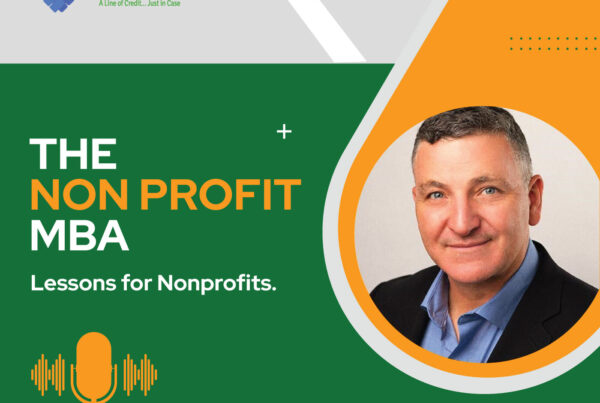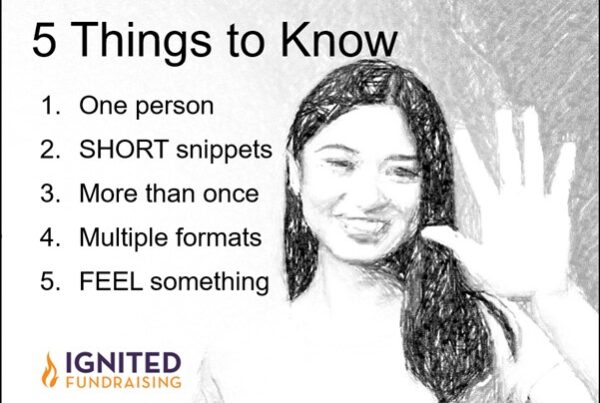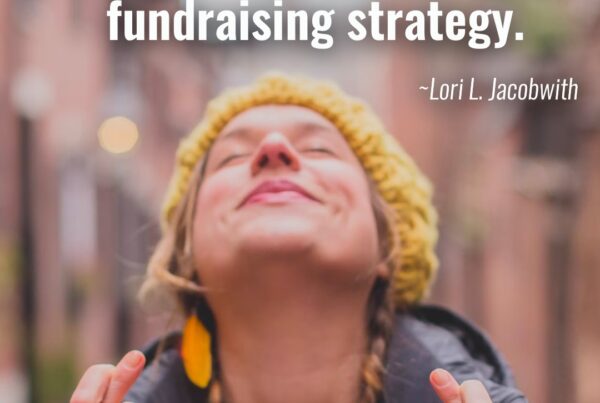Once upon a time there was a passionate CEO of a nonprofit organization. We’ll call her Susan. She wanted to make a bigger impact in the world by helping more men, women, and children.
Susan’s gift was her ability to envision and design amazing programming that built confidence and helped even the most awkward, shy person walk taller and be aware of their own gifts and talents.

Susan has devised a magical recipe for taking one teenager at time through a series of exercises that cause emotional breakthroughs to ignite self-confidence.
People keep telling Susan that her organization is life-changing. Clients go on to live incredibly rewarding lives. Her work truly makes a difference. Her goal is to change MORE lives and to grow her program.
And yet, this visionary CEO runs a nonprofit organization that always struggles to have enough money. She is not able to adequately pay staff, purchase equipment, or invest in technology and space.
If this is a familiar story, you may be missing THE key ingredient to nonprofit success: communicating to cause action.
What does it take to raise the money your work requires?
Allowing others to know exactly what it takes to do your work.
1. Amount of money
2. Required space
3. Qualified staff
The WAY those requirements are shared MUST engage and inspire.
It’s easier to discuss space or buildings and raise money for capital. What can be the most challenging is raising unrestricted operating funds.

Susan has always been adamant that she feels talking about money is crass. She was raised to serve others but do it without putting a “price-tag” on her service.
What Susan has forgotten is that she is a master at creating change. She has the program part of changing lives completely figured out. She has clung to her discomfort about talking about money.
My work with Susan was two-fold.
FIRST
Help her notice her discomfort about talking about money.
SECOND
Empower her to communicate to cause others to share their own resources in support of her very special, life-changing, work.
Here’s how Susan used to communicate.
I hate to ask you for help, but we really need some money or we’ll have to close our doors at the end of the month. Can you spare $100?
Here’s how Susan communicates today.

I was worried about Tony when I met him. He was the most awkward, withdrawn teenager I’ve ever met. At 13 he’d already been in two special schools, worked with three therapists, and was found in a fist fight with someone most days.
It’s been 6 months, Tony has begun to shed some of his anger about life. He’s not out of the woods yet, but his parents have begun to see glimmers of the special boy Tony once was.
It takes $15,000 a month to reach and help a teenager like Tony. We receive insurance and family co-pays but it takes another $7500 per teen to truly make a difference. Some teens have less challenging stories. Some have more challenging stories.
What we know is our program works. We are excellent at reaching the hardest to reach. I’m here to invite you to join in making an impact one Tony at a time.
What Susan learned is to focus her communication on the outcome for one teen at a time while also articulating what it takes financially.
Finally at 48, 10 years after starting her nonprofit, Susan will tell you she now realizes she isn’t just asking for a contribution.
Susan is now offering an example of how someone who cares about others can make a bigger difference as her partner.
Susan’s comment to me once she “got it” was, “Ahh. This is not about asking people to give me their money. It’s actually about inviting people to invest in the teenagers we know how to help. I’m an equal partner with our financial supporters. I don’t have to beg for help.”
My work with Susan is done. She’s got it.
________
Lori shares her best communication coaching and training expertise in the Complete Storytelling System with nine short video training modules and 100 pages of worksheets.






